There are many points to consider when planting terraced beds: the materials used for the retaining walls, the right plants for the conditions created and the balance of the plantings in relation to the hardscaping. By getting the plantings right, not only can we enjoy the decorative benefits, but we can also prevent the hardscaping from becoming too dominating or intrusive.
Terracing has historically been the best way to deal with slopes, which can be difficult and even dangerous to maintain. A terraced landscape is created by building a series of retaining walls, allowing space for level beds or lawns. From stone and brick for traditional gardens to concrete, metal and railroad ties for contemporary landscape designs, we have a wide choice of materials to create retaining walls, but the plantings are what can really add style to the terrace.
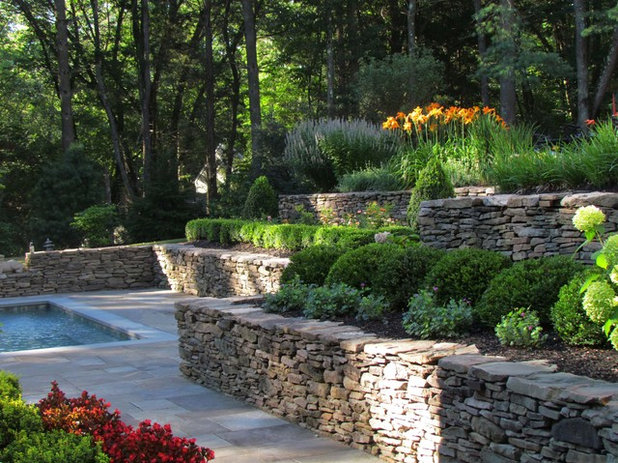
Harmony Design Group
Traditional terraced gardens tend to reflect the planting style of the overall garden or style of the house. Mixed plantings of shrubs and perennials generally found in traditional plantings not only provide year-round color and interest, but also soften hard outlines of stonework.
The real joy, though, of these raised beds is that the plants are brought up to eye level.
This style of planting can be reasonably high maintenance, however, especially with the inclusion of herbaceous perennials that require attention throughout the growing season. For this reason, the retaining walls shown here are low, and the terraced beds are are kept wide in order to carry out maintenance safely.
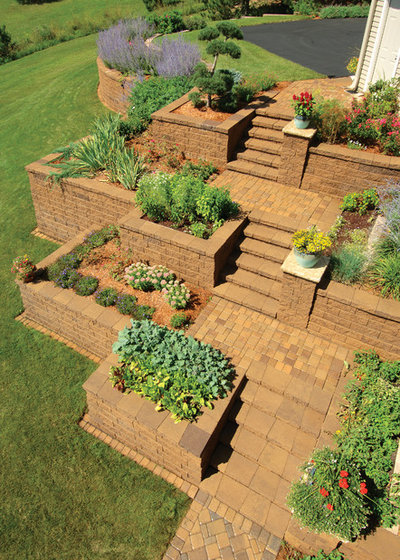
Versa-Lok Retaining Wall Systems
By dividing these terraced beds with wide steps and landings, the problem of maintenance has been overcome. The random patterns created in both the stone walls and the paving are almost replicated in the tapestry planting within the raised beds.
Different-size beds accommodate both large and small plants without a great deal of competition.
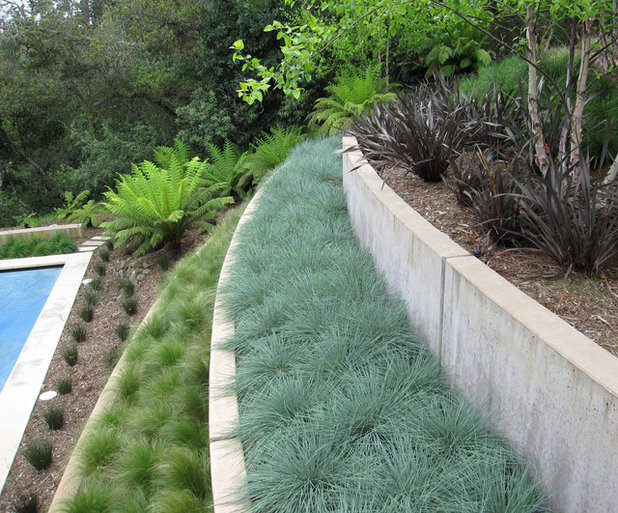
Shades Of Green Landscape Architecture
More often in contemporary gardens, hardscaping can be the overriding design feature, as with these simple concrete retaining walls.
The plantings are used to emphasize the clean lines of the walls. Grasses can be perfect to achieve this. The Festuca grasses used here become low-maintenance ground covers as they grow, requiring minimal irrigation or tending.
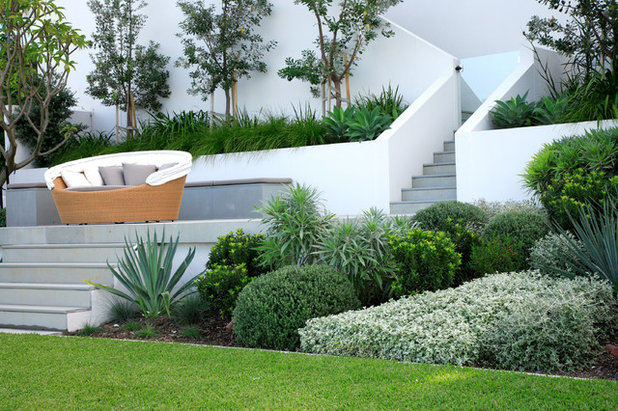
Secret Gardens
In some ways this terrace design is very similar to the previous one, with its white retaining walls almost dominating the garden. But I feel there is a clear difference in the planting. The strong architectural shapes of the plants balance the whole design — the plantings are more than just a fill-in.
See more of this terraced Sydney garden
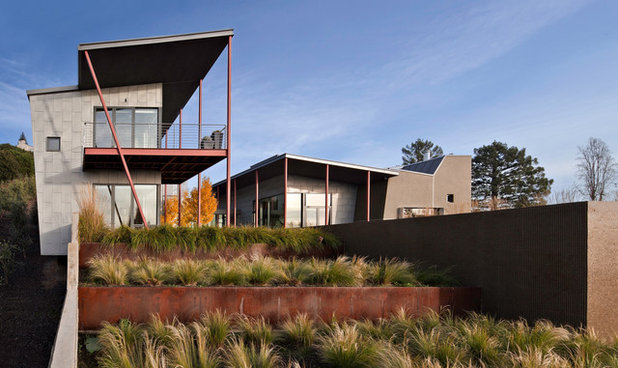
WA Design Architects
Once again we see grasses used as a terraced ground cover, but here they are used to soften the uncompromising Cor-Ten steel retaining walls. The height and color of the grasses are perfectly in harmony with the rust finish of the steel.
Ornamental grasses can be a good plant choice, as terraces can drain freely, but the selection is important; choose those that are happy to survive in existing conditions.
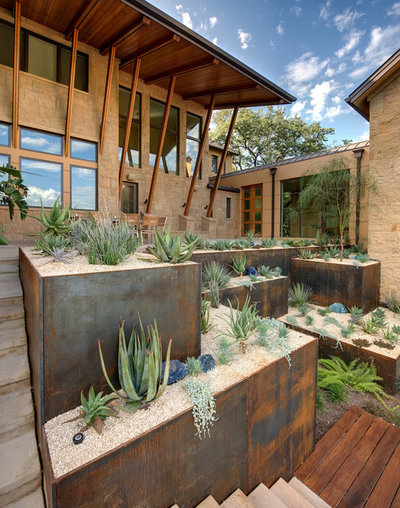
D-CRAIN Design and Construction
Again Cor-Ten steel is the material choice for the retaining walls of this terraced garden.
The glaucous coloring of the succulents contrasts well with the metal, and the plants are perfect for dry conditions. The gravel mulch aids drainage and prevents water evaporation while providing a great textural contrast against the plantings and steel.
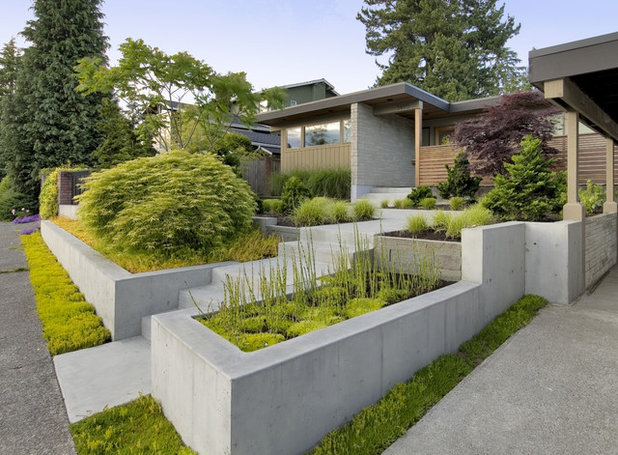
SHKS Architects
One of the real benefits of terracing is the way it links the house to the garden as well as to the contours of the landscape. While it is vitally important that the size and height of the retaining walls are in balance with the house and garden, it is equally important that the plantings don't overpower the hardscape.
The precise plantings in this terraced front garden link all the beds of differing height and size because they have the same color and tone.
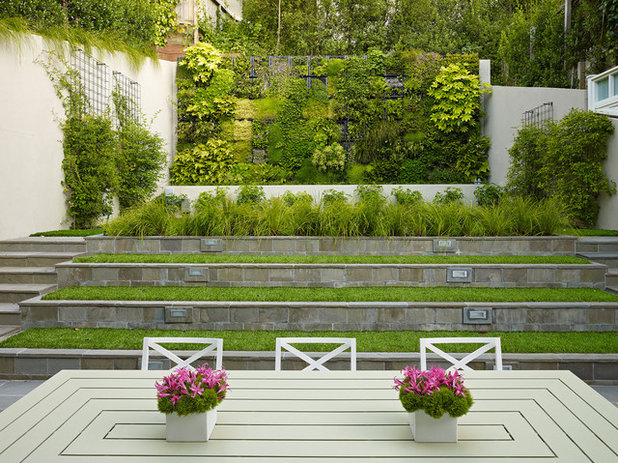
Matarozzi Pelsinger Builders
The same thoughts on integrated planting design have been used in this enclosed garden, with green as the predominant foliage color. The low retaining walls echo the Mediterranean traditional treatment for a sloping site. The horizontal beds lead the eye out, creating the illusion of the garden being wider than it is while providing usable space.
The terraced plantings are minimalistic on the lower levels, with manicured lawn stepping up to a line of ornamental grasses — the whole creating the theater for the living wall at the rear of the garden.
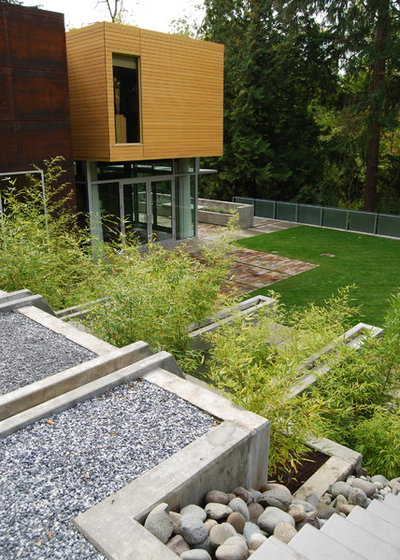
Samuel H. Williamson Associates
The use of tall, loosely foliaged bamboo allows these plantings to reach from lower levels to the heights of the top retaining wall. The design is simple yet very effective.
More: Terraces Beckon the High Life





